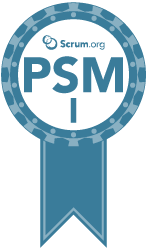What is a ‘marchitecture,’ and why should it be an essential part of your strategy? Columnist Jim Yu explains how it can bridge the gap between your technology infrastructure and your customers’ needs.

As CMOs enter 2018, the recurring theme (and need) to deliver a great customer experience is more important than ever before. CMOs need to keep pace with the connected consumer and a customer journey that is increasingly mobile and voice-enabled.
For marketers, delivering a great experience is not enough. They also must deliver results and differentiate themselves from the competition. Doing this allows marketers to serve the customer and proves to the CEO and CFO that marketing is more than a cost center.
To build the agility to transform the digital organization and keep pace with the connected consumer, it’s essential to have a strategy for developing an effective “marchitecture” — a program and plan to ensure that your product and technology are positioned to stand out from the crowd and can be easily absorbed by prospects and customers.
In this article, I will share insights into how an effective marchitecture can help you provide customers with experiences that delight them on their marketing journey and boost your overall martech positioning and performance.
Technology architecture and marchitecture
As I mentioned in my last article on key technology trends for the CMO, we are seeing a convergence of spend across technology, data, media and content. This means potentially less siloed initiatives as organizations begin to align with their customers and their needs.
Ultimately, this better serves the development of martech stacks and drives deeper personalization, enriched experiences and improved engagement across all stages of the customer journey. However, the convergence of spend across martech and ad tech only reaps real rewards if the right technology architecture and marchitecture are in place.
Technology architecture — The design and build of marketing technology products — software, systems, interfaces and integrations.
Marchitecture — Marketing and product marketing programs built around presenting how marketing technology infrastructures fit together and benefit the customer.
One of the biggest challenges CMOs face is how to make their organizations stand out in the overcrowded and increasingly complex martech ecosystem. There is a huge gap in the market where marketers and vendors need to communicate more clearly how their technology or offering meets market demand and the customer’s needs.
This is where a sound marchitecture helps bridge the gap between technology infrastructure complexity and a customer-centric solution. It’s the sweet spot where the technology you offer and the way you market combine to simplify your offering in a language that your customers can understand.
The importance of the value proposition
The key to a successful marchitecture starts with having a solid value proposition based on understanding your market, your customers and your company’s product strength. In martech, this is particularly important, as it helps you position your technology in the overcrowded marketing technology ecosystem.
Building a value proposition that differentiates your organization in a highly competitive market can be one of the most complex tasks for the CMO and marketing — but it’s the most important. Ultimately, it comes down to marketing what you offer, the key benefits, what’s in it for the customer, and why your organization is the best in the market.
When building or refining your value proposition, remember that sometimes the simpler, the better.
The three golden rules to follow are:
1. Know your market — from every angle.
Ensure that you truly understand your market and the complexity of the space you operate in. The martech space changes constantly and is something you should be looking at monthly, not annually. Conditions and competition change dramatically in martech.
2. Understand your personas — know your customers inside out.
As markets change, personas change. Simply understanding your core customer personas is not enough. Dig deeper and look at sub-personas and how to market to multiple personas. Marketing technology usage isn’t limited to one persona.
3. Use simple language — to position strongly.
This is the hardest, but most rewarding, part of marketing. Invest strongly and wisely in communication and messaging programs. Embrace new ideas and be willing to step outside of your corporate comfort zone when looking at ways to elevate your brand in the market.
Value that is stated in the audience’s terms is guaranteed to resonate and be meaningful for the customer. It becomes very impactful when it results in a message that can be spoken by any executive or employee in your company and any partner in your marketing technology ecosystem.
Building your core marchitecture
Developing a strong value proposition not only makes it easier to connect with your target audiences, but it also establishes a foundation for you to build your marchitecture. This is the base that marketing and sales strategies can be built upon and provides the organization with a consistent and “customer-cohesive” way to talk about the technology and solutions you provide.
Building your marchitecture is a journey, and as your organization grows and evolves, your marchitecture will evolve, too. For example, organizations new to the martech ecosystem may have a structure focused on building brand awareness and driving customer acquisition. Organizations higher up in the maturity curve may have marchitecture built around customer marketing and lifecycle marketing.
Many CMOs — especially those not as technically proficient as the CTO — can find it hard to lead conversations centered on technical features and technology competencies. The same applies to the rest of the organization outside of engineering. When technology is launched into the market, it’s essential for customers to understand how it works and see the benefits in a language that makes sense to them. Marchitecture documentation should combine an overview suitable for a non-technical audience with strategic positioning and messaging aligned to your core business objectives in the market.
A good way to think about marchitecture is as a technology infrastructure explained from a business perspective — it’s the customer-facing way to add clarity (without too much complexity) to show the customer the core infrastructure, or the technology backbone, of your martech solution.
A marchitecture solution also can help pull together multiple disconnected offerings and fuel a go-to-market strategy. Successful marchitecture is focused on messaging and selling benefits, not just features. It also requires a strong focus on messaging and positioning and an understanding of specific markets, industry trends, customer challenges and internal processes.
Note: Further (deeper) technical representation of product architecture is something different and is sometimes called technical architecture or “tarchitecture.” That is a whole other article.
Marchitecture is created with the consumer and buyer in mind. The key to marchitecture success is leveraging audience insights to create messaging that resonates with customers.
Marchitecture is a very pragmatic way to align and map the features of your product to the needs of the customer and marketplace by showcasing how your technology solves real business problems that customers are trying to solve — think of it as a blueprint.
The marchitecture documentation you provide should answer questions such as: How and where is data sourced? How does your technology work, and what are the key components and dependencies? What is the flow of information? How does it integrate with other technologies? Where is it positioned in the overall marketing technology stack? What are the main outputs and insights, and how does the overall framework support customers and marketing objectives?
Below are some tips on how to build a solid marchitecture:
- Start with a solid value proposition.
- Align internal stakeholders: the CEO, CMO and CTO, marketing, product management, sales and customer service.
- Identify audiences and specific industry segments where marchitecture presentation may differ.
- Build a messaging and positioning framework that differentiates you from your competition.
- Build a visual representation of your technology stack: data inputs, connectors, integrations, outputs and insights.
- Build a marchitecture slide and ensure that everyone in the org has it and can use it.
- Message only the specific technical details relative to your customers in specific verticals.
- Map product marketing marchitecture initiatives to the customer life cycle.
- Provide documentation and data sheets that highlight benefits alongside features. Be creative in how you do this.
Other, more technical questions to answer via marchitecture may relate to: How does the technology evolve over time? What are the product roadmap and the development life cycle? What is the downtime? How secure is the data? What is the quality of the data? What types of data sets are used? What are the sources of data? What is the processing speed?
Conclusion
For many organizations in the martech landscape, having a solid marchitecture helps you understand key customer points and intent and how your marketing stack can be best positioned in the market.
Going through a rigorous value proposition and marchitecture build also helps you analyze and uncover competitor challenges and identify new opportunities you may not have thought of in the past. An ideal marchitecture focuses on how your martech product solves problems for buyers. This allows CMOs to map their solution in the marketing stack and better distill messaging across the whole organization to sell in line with key business objectives
Opinions expressed in this article are those of the guest author and not necessarily Marketing Land. Staff authors are listed here.
Marketing Land – Internet Marketing News, Strategies & Tips
(34)





